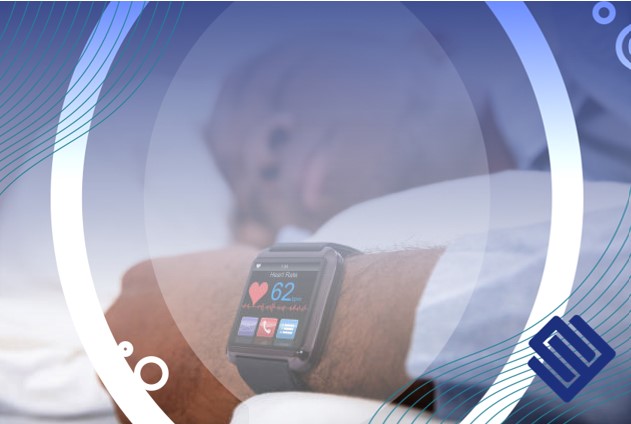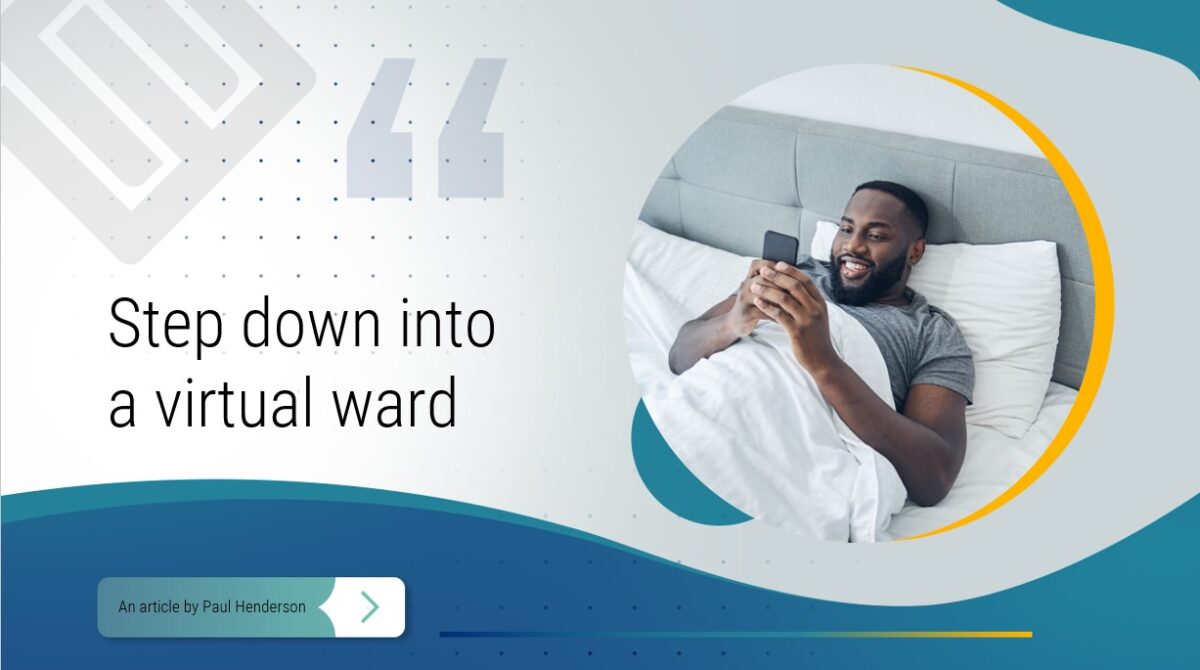Virtual wards can function as a key tool in aiding the health and care system to manage the demand for access to health and care services. Virtual wards have existed as a concept for many years without really being tightly defined and delivered at scale. So, what are virtual wards, how can they help and what do you need to think about if you want to set them up?
In the last 10 years, I have come across at least five different definitions of what a virtual ward is. The lack of an agreed definition might explain why many organisations would claim to have at least one, but the concept does not exist at a recognised scale in the NHS.
My crowd-sourced definition is that a virtual ward can be defined as:
A set of services that are wrapped around a patient to provide the necessary degree of clinical oversight, without them needing to be in a hospital bed.
This is more than just putting remote monitoring technology in a patient’s home. It is about providing a technology-enabled service that enables staff to work in the most effective way and to improve the patient experience and outcomes for those people for whom a virtual solution works. Also, beyond this high-level definition, virtual wards are different depending on the clinical challenge that you are trying to address.
An example of a successful virtual ward model
The work on pulse oximeters, as part of the pandemic response, has successfully provided remote monitoring support for many patients in their own homes and has been an undoubted success.
If you aren’t familiar with the story, you can find it here.
Patients are occupying beds when they don’t need to be. Not all patients. Some. Some of those patients could be back in their own beds at home under the right circumstances and if they had the right support. A virtual ward can help.
Imagine a clinician can look across an array of patients using data harvested from wearables and other devices and see where regularly taken test results show that a patient is outside of accepted tolerances. The clinician can then take whatever action is necessary. You can see how the tech fits – it does the monitoring and presents the data. But for a virtual ward to be helpful, other considerations need to be taken into account.
First, do no harm: Which clinical scenarios can virtual wards support?
We can take the opportunity to use the patients’ home as a step-down facility as a starting point. However, this incurs some risks for the patient and for the clinician as their partner in care, so we need to take care to manage and mitigate those risks. Setting aside regulatory and legal issues and focusing on the clinical model, for the virtual solution to be a success then the level of acuity in candidate patients must be set at the right level.
Many vendors of remote monitoring devices are alive to this and have recommendations based on clinical trials that can help. I was especially taken with the example in Norfolk here (full disclosure, we did not work on this – we just love it). This case study is about A&E admission avoidance and whilst some of the themes are common with what I am talking about, there are also differences in approach which illustrate the challenge of getting a virtual ward right.
What happens when it beeps? What physical services are needed?
Technology-enabled remote monitoring can be 24/7 so the virtual ward needs to be staffed accordingly. So how do you manage this in a way that doesn’t just mean your staff have to work even harder? The key is in the collaboration with physical service provider partners and national organisations, like 111, to agree on what support can be provided and to build this into the expectation set with the patient. Many of these organisations exist now, helping move low-acuity A&E patients into primary care, for example. What role can they play in developing this new operating model? There are great examples up and down the country. Channel 3 is currently working in Greater Manchester and has seen the great work done by a group of partners who have collaborated to create a service wrapper that supports their virtual wards.

Is it worth it? How do you make the case for change and deliver value?
Cases for change traditionally look for benefits in terms of staff and patient experience, cost-avoidance and most commonly (and always fraught with danger!) cash-releasing savings. In our step-down example there are so many questions:
- Is the length of stay in a virtual ward monitored? If so, how is that data reported?
- How much does it cost?
- What is the liability for the trust?
- What is the obligation of the patient?
- What is the reimbursement model?
- Is one organisation’s cost another’s saving? How does the attribution of cost savings work?
- What KPI goes onto the trust board scorecard?
Really, these are all perspectives on the central question of whether a virtual ward is worth it. The answer will almost certainly be yes, but the case for change needs to be clearly defined and expectations carefully set. In recent projects I have found that starting with a RACI matrix – which sets out who is responsible and accountable for different aspects of the virtual ward service, who needs to be consulted and who needs to be kept informed – is key to getting the conversation right. The operating model that delivers the value may be complex.
Computer says no: How do you incentivise patient adoption?
Research into digital inequalities points to a few things that inhibit the adoption of technology, and they can all scupper the best-laid plans for virtual wards.
Factors that can damage the adoption of virtual ward technology
| Situation | What the patient might say |
| Lack of access to devices and networking | “The device is broken and my broadband is rubbish” |
| Poor user experience | “I can’t work the thing” |
| Lack of patient incentives | “No, it’s ok, I’d rather be in the hospital” |
| Confusing technology implementations | “I have so many apps that I can’t tell which virtual ward I’m on!” |
Similarly, and conversely, the last point about the proliferation of apps can present challenges to clinicians, such as:
- Where does the data go?
- How do I see it?
- How can I use it?
- What is its context amidst all the other data I have?
- Can I trust it?
These are all questions that can inhibit clinical buy-in to the technology.
There is no “I” in team: How do you pull together the team needed to solve all these issues?
The virtual wards that have been successful have similar team sheets:
- The ward is conceived by a clinician with a particular scenario and cohort of patients in mind.
- It is supported by a reliable vendor with a sensitive understanding of risk and value that can deploy devices safely.
- There is an operational partner that does the important stuff like managing the assets, cleaning and fixing them.
- There is a transformation lead who understands the overall value proposition and makes sure that it is defined, measured and delivered and not derailed by questions like “What else could the platform could do?”
- There is a data lead who ensures the data architecture enables the right clinical and operational data to be created and its meaning to be commonly understood.
- Finally, there is the strategic technology lead.
Allow me an extra sentence on the strategic technology lead. I have tried not to be too techy, but this is important. Surely the virtual ward is part of the overall case for a shared care record and has a symbiotic relationship with this key enabler of population health management at scale. The tech lead will be able to help make sure the shared record and virtual ward records enrich each other and are shared with the right users (patients and staff), in the right way, at the right time and in the right place. They’ll also help ensure the user experience is solid and digital inequality is minimised. And very importantly, they’ll make sure that many virtual wards don’t mean many, many, many, many apps that don’t deliver on their promises.

Virtual wards can provide patients with a better alternative to a hospital bed by providing assurance and clinical oversight remotely. The fact that there’s not a single definition of what they are shouldn’t stop us from planning for them at scale and realising their potential benefits. They can provide staff with a way of overseeing the care of growing numbers of patients using shrinking resources (especially during the pandemic) and increasing priorities. If you design them effectively, they can be a fantastic resource within our health and care system. The key is defining the right circumstances under which they can be used, pulling the right teams of people together, recognising that the technology needs a service wrapper and building a clinically-led case for change which can get the thumbs up from patients.
